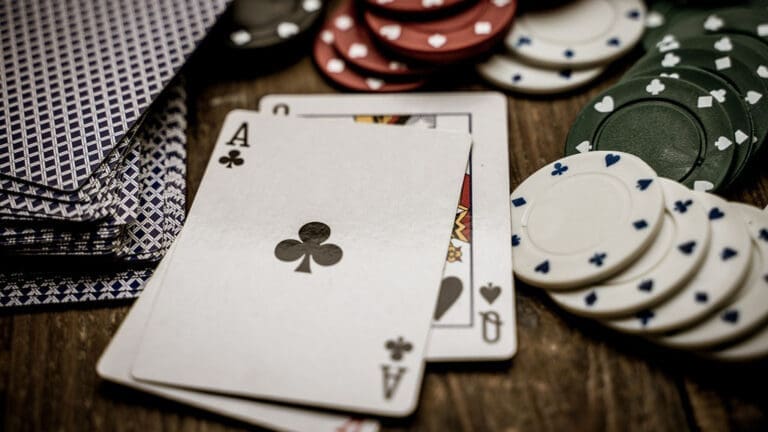The Basics of Poker Hands
In the world of poker, understanding the different combinations of cards or the ‘poker hands’ is crucial to master the game. The value or strength of these hands can determine the outcome of a poker game, with certain combinations ranking higher than others. This section will delve into the basic understanding and hierarchy of poker hands.
Understanding the Hierarchy of Poker Hands
The hierarchy of poker hands is a fundamental aspect of the game. This hierarchy determines the strength of a player’s hand in relation to their opponents. The player with the highest-ranking hand wins the round. The hierarchy is as follows, from highest to lowest:
- Royal Flush
- Straight Flush
- Four of a Kind
- Full House
- Flush
- Straight
- Three of a Kind
- Two Pair
- One Pair
- High Card
Each of these hands has a specific combination of cards that distinguishes it from the others. For instance, a Royal Flush, which is the highest-ranking hand, consists of the Ace, King, Queen, Jack, and Ten of the same suit. On the other end of the spectrum, the High Card, which is the lowest-ranking hand, has no specific combination and its value is determined by the highest card in the hand.
For a beginner, understanding this hierarchy might seem daunting. However, with consistent practice and a good grasp of the rules, it becomes second nature. A handy tool for beginners is a poker hand cheat sheet, which provides a quick reference guide to the hierarchy of poker hands.
Knowing the strength of each hand is important, but to excel in poker, players must also understand the odds of getting each hand and how to strategically play them. These topics will be discussed in greater detail in the following sections.
Remember, mastering the game of poker is not just about having the best poker hands, but also about understanding how to use these hands to your advantage.
The Royal Flush
Among the best poker hands, the Royal Flush reigns supreme. It is the highest-ranking hand that one can amass in a game of poker.
Explanation of a Royal Flush
A Royal Flush is a straight flush that includes the five highest cards of a suit: Ace, King, Queen, Jack, and Ten. The key characteristic that sets a Royal Flush apart from other poker hands is the presence of these specific cards, all of the same suit. It’s a combination that serves as the pinnacle of poker hand achievement.
For example, a classic Royal Flush could look like this:
 A♣ | 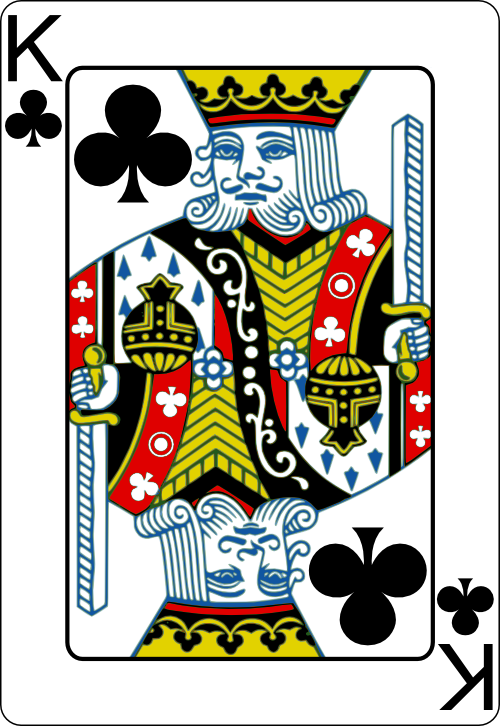 K♣ |    Q♣ |   J♣ |    10♣ |
A Royal Flush is an unbeatable hand, meaning it trumps all other poker hand combinations. For a comprehensive overview of how poker hands stack against each other, refer to our poker hand rankings guide.
The Odds of Getting a Royal Flush
Despite its unbeatable status, a Royal Flush is the rarest hand in poker. The odds of being dealt a Royal Flush are approximately 1 in 649,740. This rarity is what makes the Royal Flush such a coveted hand among poker players.
Here’s a glance at the rarity of a Royal Flush:
| Poker Hand | Odds |
|---|---|
| Royal Flush | 1 in 649,740 |
While the odds may seem discouraging, remember that poker is a game that combines luck and strategy. So, even if the chances of landing a Royal Flush are slim, understanding your other card combinations and how to play them effectively can still lead to a winning game. For more insight into the odds and strategy of poker hands, check out our poker hand cheat sheet.
The Straight Flush
Moving up the hierarchy of poker hands, one finds the straight flush. This potent hand is only surpassed by one other in the deck – the royal flush. Understanding the straight flush and the rarity of its occurrence is key to mastering poker strategy.
Explanation of a Straight Flush
A straight flush in poker is a combination of five cards of the same suit in sequential order. For example, a 5-6-7-8-9 of spades is a straight flush. The power of a straight flush lies in its rarity and the difficulty for opponents to beat it.
   5♠️ |   6♠️ | 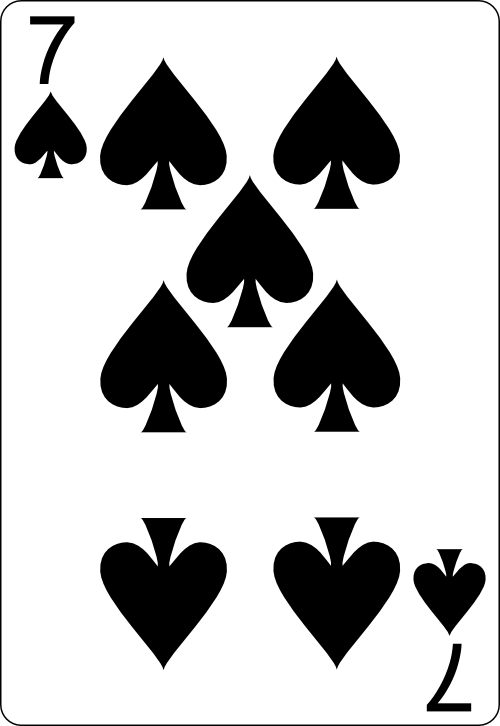  7♠️ | 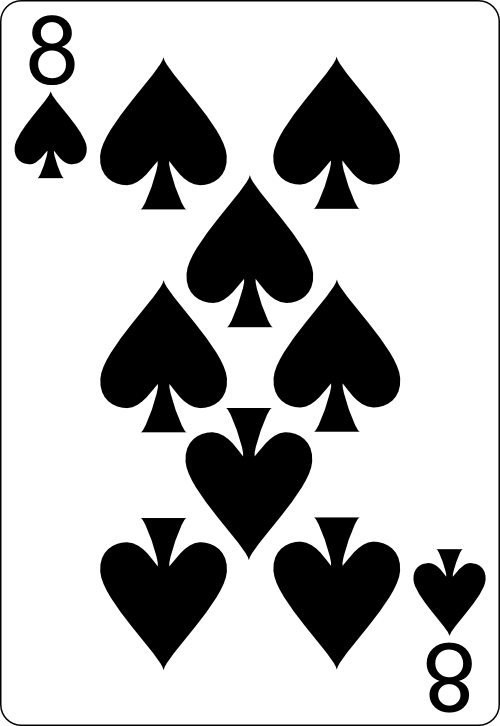   8♠️ | 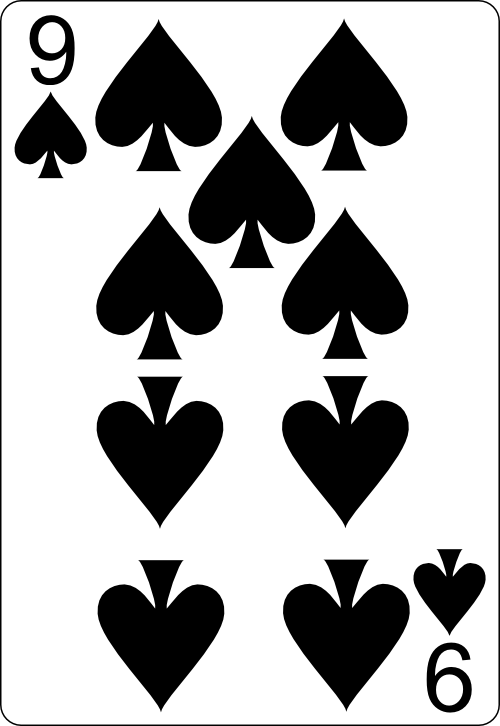   9♠️ |
It’s important to note that the highest possible straight flush (excluding the royal flush, which is the highest-ranking hand in poker) is a straight flush to the king. This hand includes a 9, 10, Jack, Queen, and King of the same suit. For a detailed overview of the ranking of poker hands, refer to our comprehensive guide on poker hand rankings.
The Odds of Getting a Straight Flush
The straight flush is a coveted hand due to its strength and the low probability of its occurrence. In a standard 52-card deck, there are only 36 possible straight flushes. This means the odds of being dealt a straight flush are approximately 1 in 64,974.
| Poker Hand | Probability |
|---|---|
| Straight Flush | 1 in 64,974 |
These statistics illustrate why a straight flush is one of the winning poker hands. Its rarity and power often ensure victory if you are fortunate enough to be dealt one.
Remember, however, that poker is not solely a game of luck. Understanding the odds of different hands is just one aspect of a robust poker strategy. It’s also important to learn how to read your opponents, bluff effectively, and make strategic decisions based on the cards you’re dealt. For a quick reference guide to poker hand strengths, check out our handy poker hand cheat sheet.
The Four of a Kind
Among the best poker hands, Four of a Kind is a hand that poker enthusiasts dream of. This section will explain what a Four of a Kind is and the odds of getting this prized hand.
Explanation of a Four of a Kind
In poker, Four of a Kind, also known as ‘quads,’ refers to a hand where a player has four cards of the same rank and one card of a different rank. The rank of the quadruplet determines the strength of the hand; the higher the rank, the stronger the hand. For instance, four Aces will beat four Kings. If two players both have Four of a Kind, the player with the highest ‘kicker’ or the fifth card, wins the hand.
Here’s an example of a Four of a Kind:
  4♠️ |     4♣ |    4♥️ |     4♦️ |    9♠️ |
For more information on how Four of a Kind ranks compared to other hands, refer to our poker hand rankings guide.
The Odds of Getting a Four of a Kind
The probability of getting a Four of a Kind in poker is relatively low. In a game of Texas Hold’em, with a 52-card deck, the odds of getting Four of a Kind on the flop (the first three community cards) are approximately 1 in 4,164. By the river (the final community card), the odds improve to approximately 1 in 594. These probabilities, however, can vary depending on the specific circumstances of the game.
| Stage | Odds |
|---|---|
| Flop | 1 in 4,164 |
| River | 1 in 594 |
Four of a Kind is a highly sought-after hand in poker due to its rarity and the high likelihood of winning the pot when it’s dealt. Understanding the odds of getting this hand can help players make informed decisions during the game. For a comprehensive list of the odds of getting various poker hands, you can check our poker hand cheat sheet.
The Full House
In the hierarchy of poker hand rankings, a full house is a formidable hand that can often lead to victory. Poker enthusiasts need to comprehend this hand and the probability of getting it to improve their overall strategy.
Explanation of a Full House
A full house, also known as a “boat,” is a hand that contains three matching cards of one rank and two matching cards of another rank. For instance, three Eights and two Queens make a full house. If two players both have a full house, the player with the higher three matching cards wins the hand. If these are the same, then the player with the higher pair wins.
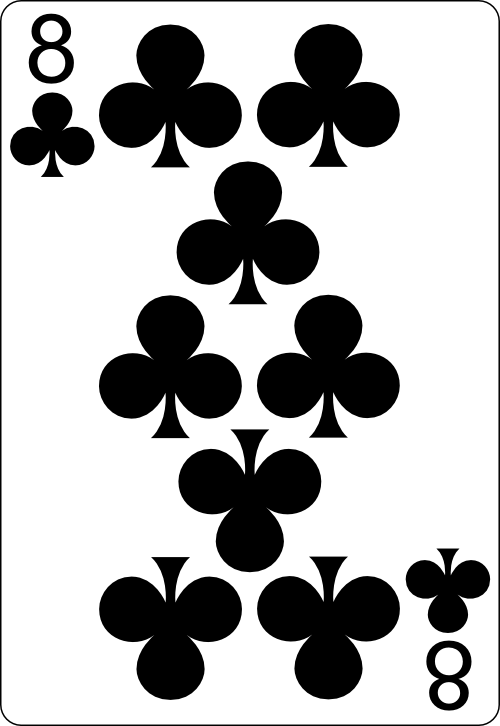  8♣️ | 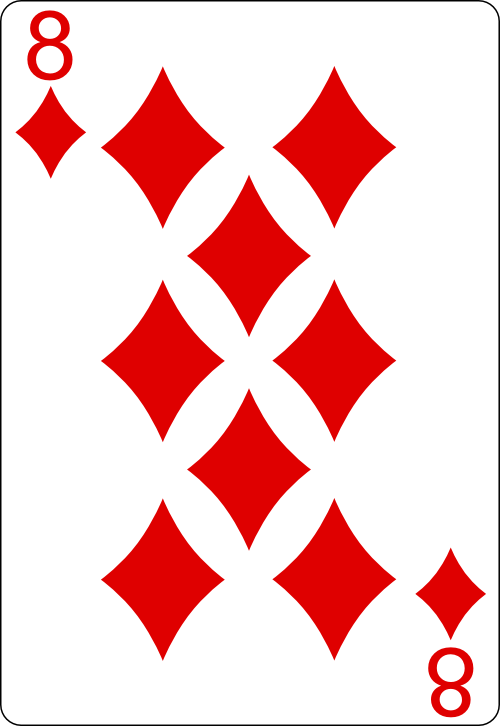  8♦️ | 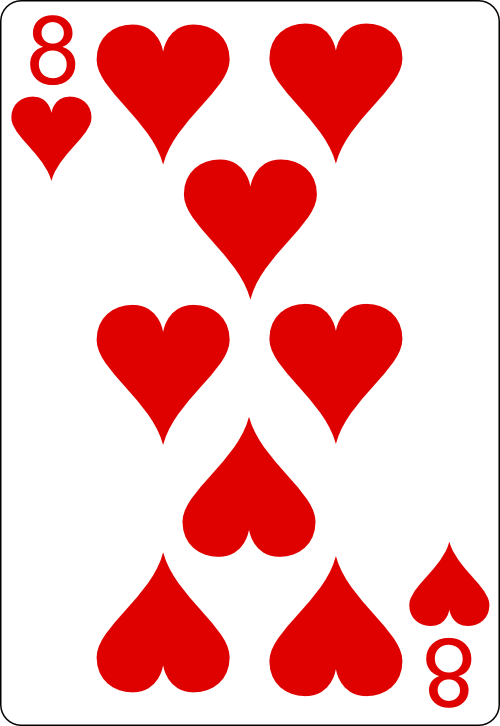   8♥️ |    Q♣️ | 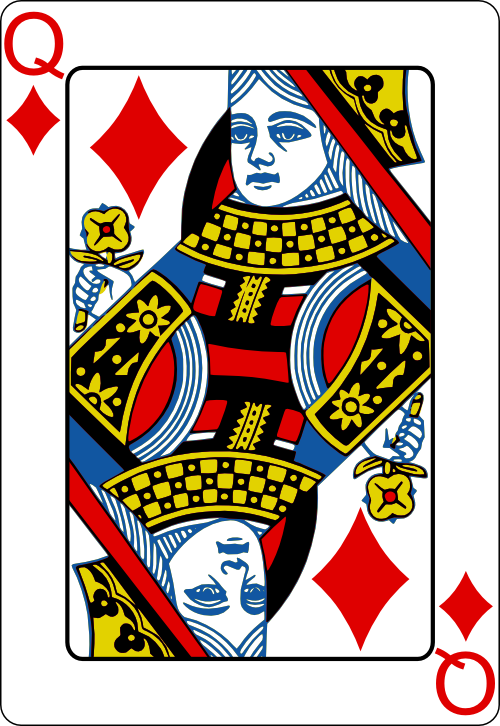   Q♦️ |
The Odds of Getting a Full House
The odds of being dealt a full house in poker are not particularly high. With a standard 52-card deck, there are 3,744 possible full house hands, making the probability approximately 0.14%, or 1 in 694. To put it into perspective, here’s a table illustrating the odds of getting some of the best poker hands, including a full house:
| Poker Hand | Odds |
|---|---|
| Royal Flush | 1 in 649,740 |
| Straight Flush | 1 in 72,193 |
| Four of a Kind | 1 in 4,165 |
| Full House | 1 in 694 |
| Flush | 1 in 509 |
| Straight | 1 in 255 |
While the odds may seem low, understanding the probability and knowing how to play a full house can significantly improve your game. It’s all about strategy and making the most out of the cards you’re dealt. For more insights into playing winning poker hands, check out our other articles. And if you’re a beginner or need a quick refresh, our poker hand cheat sheet can be a handy tool.
The Flush
Understanding the hierarchy of poker hands is key to mastering the game. One of the best poker hands that players should familiarize themselves with is the Flush.
Explanation of a Flush
A Flush is a hand that consists of five cards of the same suit, not in sequence. The suits in poker are diamonds, clubs, hearts, and spades. In a Flush, the cards do not need to be consecutive, but they must all share the same suit.
  5♦️ |    Q♦️ |   3♦️ |   10♦️ |    A♦️ |
For example, a player holding the 2, 4, 7, 9, and Queen of hearts has a Flush. The rank of the Flush is determined by the highest card in the hand. So, a Flush with a King as the high card beats a Flush with a Queen as the high card. The Flush is a strong hand in poker, but it falls below the Full House and above the Straight in the poker hand rankings.
The Odds of Getting a Flush
Calculating the odds of getting a Flush involves some understanding of probability and the rules of poker. In a standard 52-card deck, there are 5,108 possible Flush hands and 1,277 distinct ranks of a Flush under high rules when using a standard 52-card deck.
This means the probability of being dealt a Flush from a shuffled deck in the initial five-card deal is approximately 0.20%. The odds of achieving a Flush, therefore, are approximately 508 to 1. These odds are based on the assumption that the player keeps all five cards and does not draw any new cards to improve their hand.
Keep in mind that these odds are approximations and can vary slightly depending on the specific game rules and number of players. For more information on the odds and rankings of poker hands, refer to our poker hand cheat sheet.
| Hand | Possible Combinations | Odds |
|---|---|---|
| Flush | 5,108 | 508 to 1 |
Knowing the odds of getting a Flush can help players make informed decisions during the game. The key to winning poker is not just about having the highest hand but also understanding the likelihood of achieving these hands and playing strategically. For more strategies on how to play and win with the best poker hands, check out our article on winning poker hands.
The Straight
A fundamental part of mastering poker involves understanding the various poker hands and their rankings. One such hand is the Straight, which holds a significant place in the hierarchy of poker hands.
Explanation of a Straight
In poker, a Straight is a hand that contains five cards of sequential rank, but not all of the same suit. The Straight is a relatively strong hand, falling below the Flush and above the Three of a Kind in the traditional poker hand rankings.
   10♣️ |   J♦️ |   Q♠️ |    K♣️ | 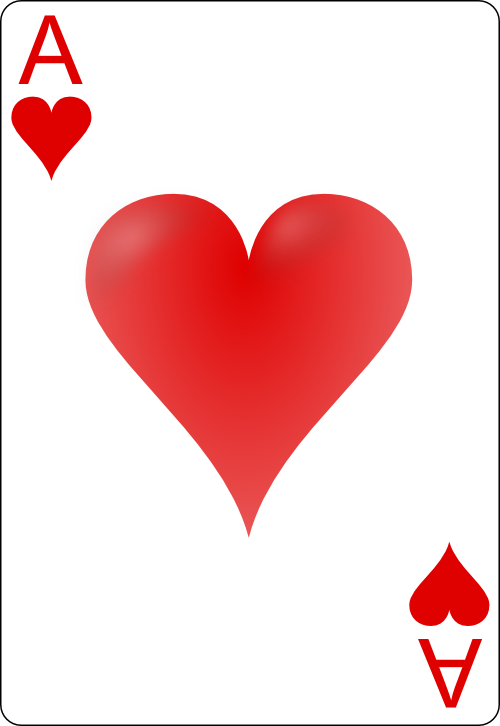  A♥️ |
The strength of a Straight is determined by the highest card in the sequence. For example, a Straight that runs from 10 to Ace is stronger than a Straight that runs from 2 to 6. It’s crucial to note that in some poker variants, the Ace can be used as both a high and a low card, which means it can be used to form a Straight of Ace-2-3-4-5 or 10-Jack-Queen-King-Ace.
The Odds of Getting a Straight
Calculating the odds of getting a Straight requires a basic understanding of poker probabilities. It is estimated that the probability of being dealt a Straight in the first five cards is approximately 0.39%, or one in 255 hands.
| Hand | Probability | Odds |
|---|---|---|
| Straight | 0.39% | 1 in 255 |
However, these odds can change significantly during the course of a game. Factors such as the number of players, the specific game variant, and the player’s strategy can all influence the probability of getting a Straight. For more detailed information about winning poker hands, including the odds and strategies, explore our comprehensive resources.
Remember, while understanding the best poker hands and their odds is important, poker is also a game of skill and strategy. Being able to read other players and bluff effectively can dramatically improve your overall performance. Be sure to check out our poker hand cheat sheet for a quick reference guide on poker hand rankings and the best strategies to employ.
Three of a Kind
Three of a Kind is an important hand in the world of poker. It constitutes three cards of the same rank and two unrelated side cards. This hand is one step above Two Pair in the poker hand rankings.
The Value of Three of a Kind
In Three of a Kind, the value of the hand is determined primarily by the rank of the trio of cards. The higher the rank of these three cards, the greater the strength of the hand.
For example, a Three of a Kind with three Kings (K-K-K-4-2) is significantly stronger than a Three of a Kind with three Twos (2-2-2-K-Q). If two players hold Three of a Kind, the player with the highest trio of cards wins the hand.
   K♦️ |    K♥️ |   K♠️ |    4♥️ |   2♣️ |
Strategy When Holding Three of a Kind
Holding a Three of a Kind can provide a strategic advantage in a game of poker. It is a strong hand, especially in games like Texas Hold’em and Omaha, and can often lead to winning the pot.
However, the strength of this hand also depends on the community cards and the hands that the other players could potentially have. For instance, while a Three of a Kind is a strong hand, it will lose to a Straight, Flush, Full House, Four of a Kind, Straight Flush, and Royal Flush.
One common strategy when holding a Three of a Kind is to bet aggressively to push out players with drawing hands that could potentially beat you in later rounds. However, if the community cards suggest that another player could have a stronger hand (like a Flush or Straight), it may be wise to play more cautiously.
Two Pair
Navigating the world of poker hand rankings can be complex, especially for beginners. The ‘Two Pair’ hand is a crucial part of this hierarchy and understanding its value and how to play it can significantly improve your poker strategy.
How to Play Two Pair
A ‘Two Pair’ hand consists of two distinct pairs of cards and a fifth unpaired card, also known as the ‘kicker’. For instance, a hand containing a pair of 8s, a pair of 4s, and a King is considered a ‘Two Pair’.
   8♥️ |    8♠️ |     4♣️ |     4♦️ |    K♦️ |
Playing a ‘Two Pair’ requires a strategic approach. It’s a solid hand but still vulnerable to stronger hands like ‘Three of a Kind’, ‘Straight’, ‘Flush’, ‘Full House’, and so on. Therefore, it’s important to assess the table and your opponents’ actions before making your move.
For instance, if the community cards hint at the potential for a higher-ranked hand (like a ‘Straight’ or a ‘Flush’), it might be a good idea to play cautiously, even if you hold a ‘Two Pair’. Conversely, if your two pairs are high-ranking cards, and the community cards show little potential for your opponents to outdo your hand, you might consider playing more assertively.
The Value of Two Pair
In the poker hand hierarchy, a ‘Two Pair’ ranks above a ‘Pair’ and below a ‘Three of a Kind’. Within ‘Two Pair’ hands, the one with the highest pair wins. For example, a ‘Two Pair’ with a pair of Queens and a pair of 5s will beat a ‘Two Pair’ with a pair of Jacks and a pair of 10s.
If two players have the same highest pair, the second pair is used to break the tie. If both pairs are the same, the ‘kicker’ or fifth card determines the winner. Remember, poker is a game of ranks, so a ‘Two Pair’ with a higher kicker will always beat a ‘Two Pair’ with a lower kicker.
Understanding the value of a ‘Two Pair’ and how to play it effectively is a key aspect of mastering poker hand rankings. It’s important to remember that while the ‘Two Pair’ is a strong hand, it’s not invincible. Always consider the potential of your opponents’ hands and the likelihood of them having a higher-ranked hand.
Pair
In the world of poker hand rankings, a pair occupies a pivotal position. This hand consists of two cards of the same rank, along with three unrelated cards.
The Value of a Pair
A pair, while not the highest-ranking hand, is still a valuable player in the game of poker. It ranks above a high card but below two pair in the traditional poker hand hierarchy.
The value of a pair is determined by the rank of the pair itself. For instance, a pair of Aces is the highest possible pair, while a pair of Deuces (twos) is the lowest. If two players both have pairs, the player with the highest pair wins the hand. If both players have the same pair, the hand is decided by the highest side card, also known as the ‘kicker’.
  A♠️ |    A♦️ |     4♣️ |    5♠️ | 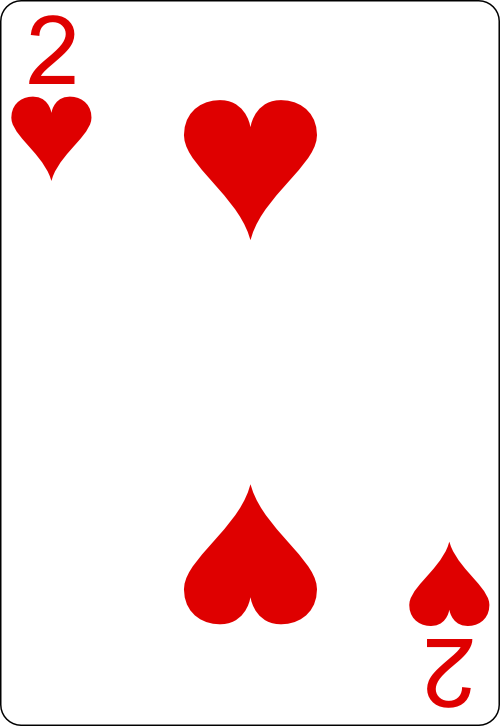  2♥️ |
Strategy When Holding a Pair
Having a pair can be a strong starting point in a poker game, but the strategy will significantly depend on the specific pair and the dynamics of the game. A pair of high-ranking cards, such as Aces or Kings, is typically a strong hand to start with.
However, lower pairs might require a more cautious approach. The power of your pair can be significantly reduced if the community cards (cards on the table that everyone can use) include higher-ranking cards. Therefore, it’s crucial to pay attention to the potential poker hand strength of other players’ hands.
The strategy may also change depending on how the game unfolds. For instance, if you have a pair and the community cards reveal possibilities for higher-ranking hands like straights or flushes, it might be wise to play more conservatively.
Understanding poker hand rankings, including the value of a pair and the strategy associated with it, is a fundamental aspect of poker. It helps players make informed decisions about how to bet, call, raise, or fold during a game. For additional insights, be sure to check out our articles on the best and worst poker hands.
High Card
The most basic category in poker hand rankings is the High Card. This hand ranking comes into play when no player at the table has managed to form any of the other standard poker hands like a pair, two pair, three of a kind, etc.
When a High Card Comes into Play
A High Card hand usually comes into play in scenarios where no player has a hand that falls into any of the other categories in the poker hand hierarchy. In such cases, the player with the highest card in their hand wins the round.
It’s important to remember that the term ‘high card’ doesn’t refer to just any card, but specifically to the highest one in a player’s hand. For instance, if a player has the cards 2, 4, 7, 10, and King, then the King is their high card.
  2♠️ |     4♦️ | 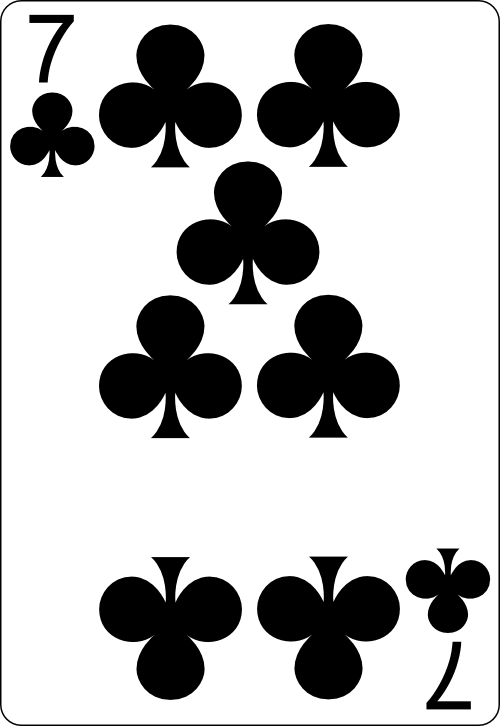  7♣️ | 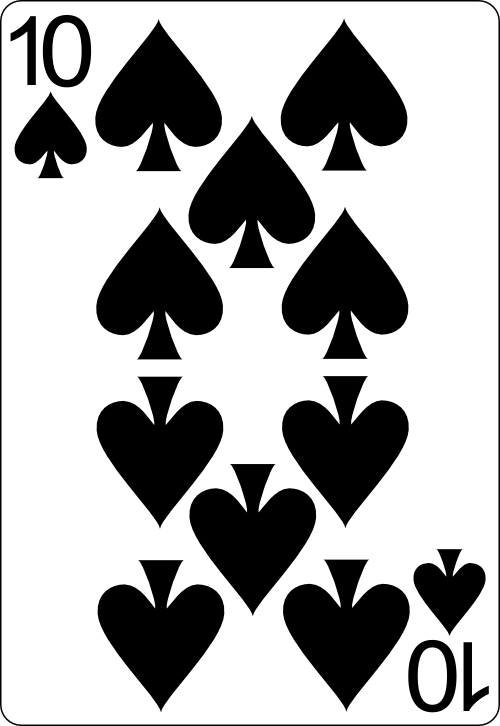  10♠️ |    K♥️ |
Understanding the Value of High Cards
In terms of value, a High Card hand is at the very bottom of the poker hand rankings. It’s the lowest possible hand that a player can have in poker, and it’s often one of the worst poker hands to rely on.
However, that’s not to say that high cards don’t have their uses. In fact, they can often be the deciding factor in determining the winner of a round when no other player has a stronger hand. Furthermore, high cards can also play a crucial role in bluffing strategies, where a player may attempt to convince their opponents that they have a stronger hand than they actually do.
Understanding the value of high cards in relation to other hand rankings is crucial to developing an effective poker strategy. While it’s not the most powerful hand, a high card can still be enough to win you the pot in the right circumstances. As with any hand, knowing when to play and when to fold is key to mastering the game of poker.
Strategy Tips for Winning Hands
Playing poker is not just about understanding what constitutes the best poker hands. It’s also about knowing how to play those hands, how to bluff with lower ranking hands, and how to read other players’ hands. These strategies can significantly improve your poker gameplay and help you win more hands.
How to Play High Ranking Hands
High ranking poker hands, such as the Royal Flush or Four of a Kind, are the dream of every poker player. However, knowing how to play these hands is crucial for maximizing your winnings. When dealt a high-ranking hand, it’s often tempting to bet aggressively to scare off other players. However, this strategy can sometimes backfire, as it may cause all other players to fold, limiting the pot size.
A better strategy would be to play these hands more subtly, making moderate bets that encourage other players to stay in the game and contribute to the pot. Remember, your objective is not just to win, but to win big. For a quick reference on how to play each hand, refer to our poker hand cheat sheet.
How to Bluff with Lower Ranking Hands
Bluffing is an integral part of poker. If done correctly, it can turn even the lowest ranking hands into winning ones. When bluffing, the goal is to make your opponents believe you have a stronger hand than you actually do. This can cause them to fold, allowing you to win the pot despite having a weaker hand.
The key to successful bluffing is consistency. Your betting pattern, body language, and mannerisms should all align with the message you’re trying to convey. Bluffing should also be used sparingly. If you bluff too often, your opponents may catch on and call your bluff, leading to substantial losses.
How to Read Other Players’ Hands
Reading other players’ hands is a skill that comes with time and practice. It involves paying close attention to your opponents’ betting patterns, body language, and reactions to certain cards. For example, a player who suddenly starts betting aggressively might have a strong hand. Conversely, one who hesitates or seems uncertain may have a weaker hand.
Understanding your opponents’ behaviors can give you insights into the strength of their hands, helping you make more informed betting decisions. However, remember that experienced players may also use these behaviors to mislead you, so always combine this information with your understanding of the game and your own hand.
By employing these strategies, you can increase your chances of winning, regardless of the hand you’re dealt. For more information on poker hand rankings, visit our guide on poker hand rankings.

